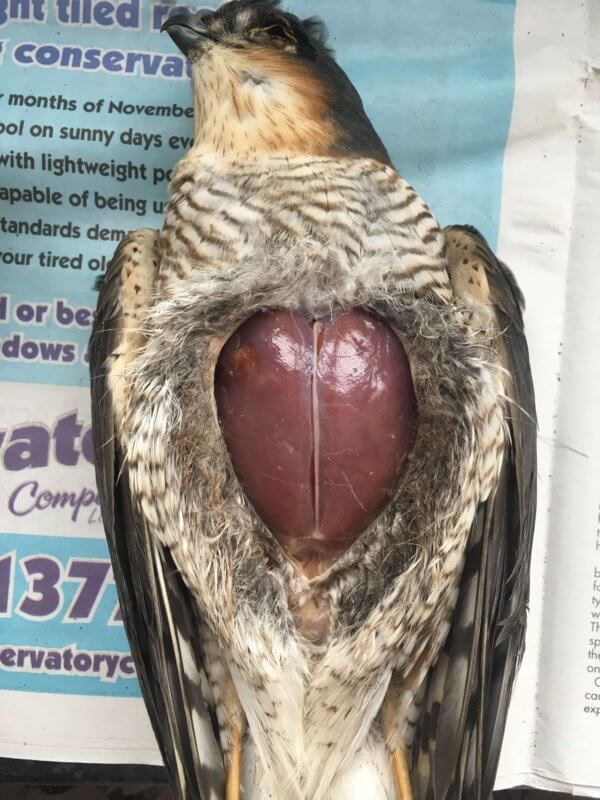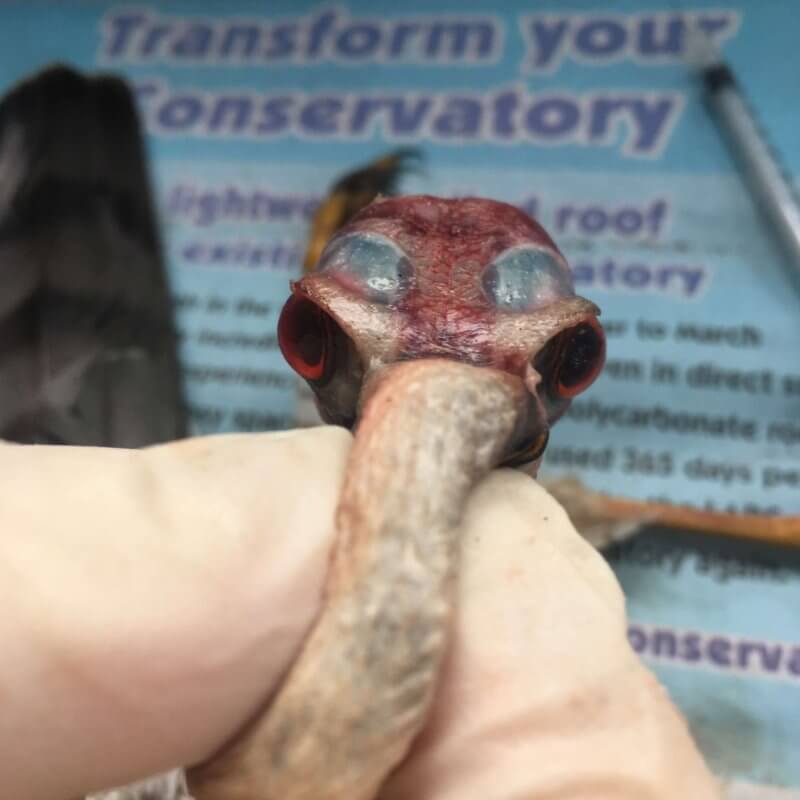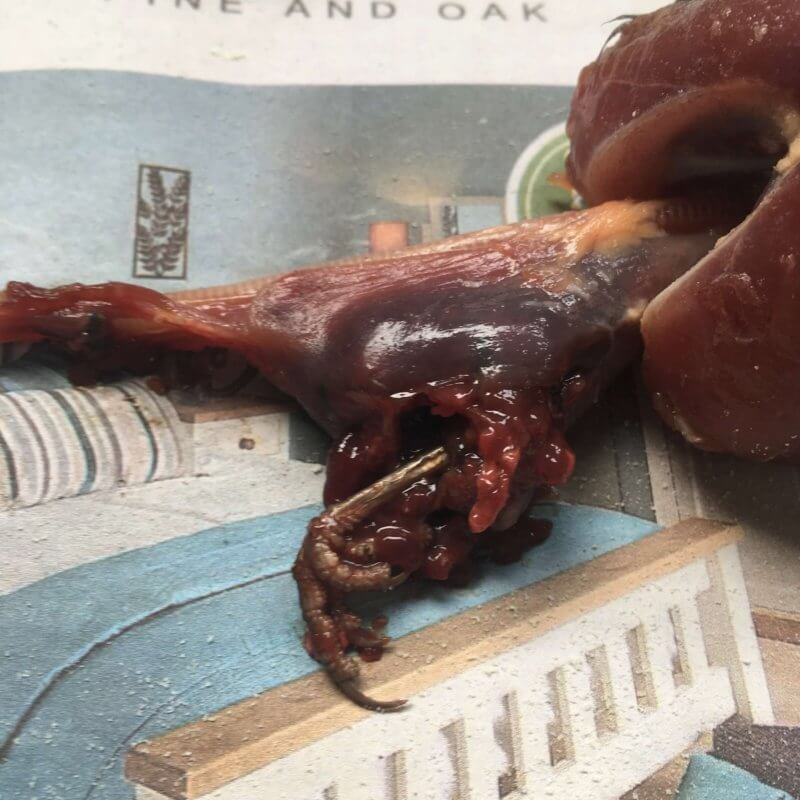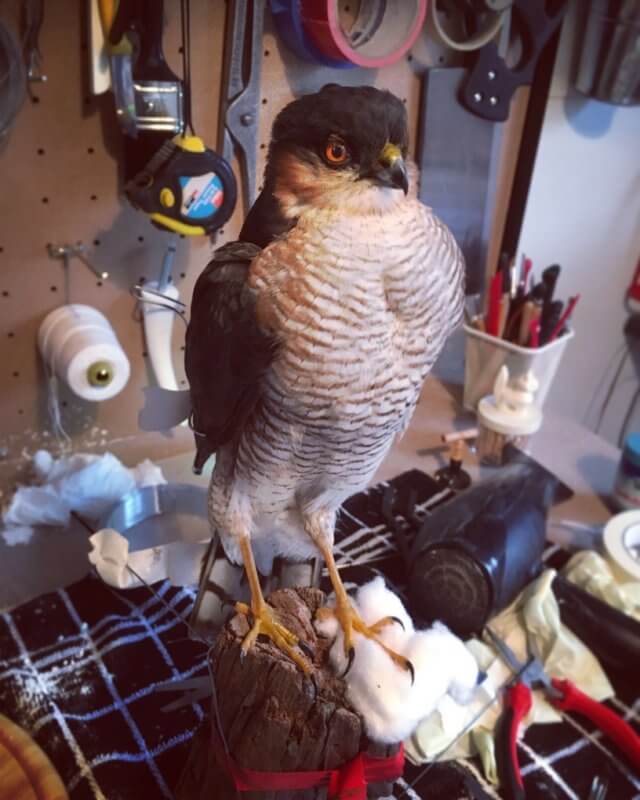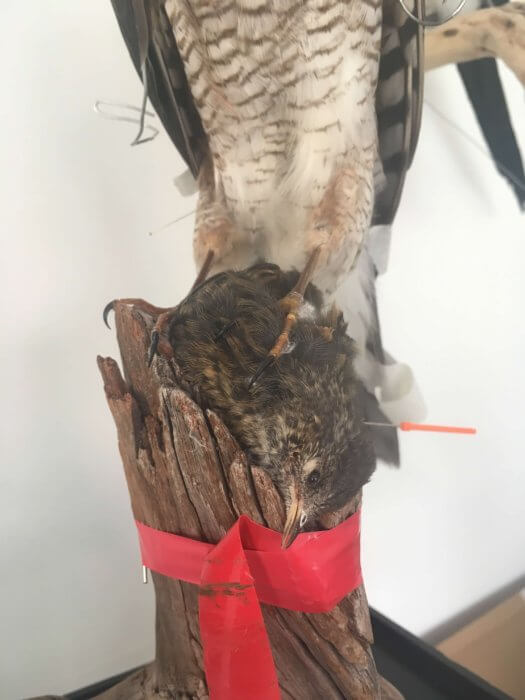WARNING: This post contains graphic images of the taxidermy process. If you are sensitive to this kind of material, please don’t scroll down!
I recently got the amazing opportunity to work with a very special specimen – a male sparrowhawk (Accipiter nisus). Unfortunately this one won’t be for sale as he is a commission from a customer that picked him up after he flew in to a greenhouse mid-chase, trying to hunt down his prey.
In most species of birds, it’s sometimes difficult to tell the gender of birds just by looking at their exterior, but with sparrowhawks it’s much easer to tell. This is because the males are considerably smaller than the female and they also have this gorgeous blue colour to their plumage, where the females are more brown in colour.
As this is a special bird, I thought it would be interesting to show you all some snippets of the taxidermy process! (As mentioned before, if you’re squeamish, this is the time to avert your eyes!)
Whilst skinning this bird, I came across something I hadn’t seen up close before, which absolutely fascinated me. I noticed his crop (A crop is a thin-walled expanded portion of the alimentary tract used for the storage of food prior to digestion) was bulging quite a lot. The curiosity got the better of me and I decided to open it up. I found a whole other bird in there! It looked a little like something from ‘Alien’. Unfortunately this bird was a bit to mangled to identify, but my guess is that it was a blue-tit, dunnock or something similar. At least we know he had good meal before he departed!
The eyes also captivated me. I use an empty surgical syringe to inject air in to the eyes to re-inflate them so I can write down measurements for correct eye placement. Look how fiery they are and think how terrifying they must look to small birds before they get eaten, eeeeeek!
After putting him back together, I processed a little dunnock to put under his very sharp talons – I like to think I gave him a second chance. This is a replication of a scene that would have been seen had he been successful in catching his prey before he tragically crashed and departed us.
All that’s left to do now is to paint around his eyes, beak and legs and it should really finish this project off nicely.
I’ll take some better photos once he’s all finished up.
Thank you for looking! If you have any questions at all about the taxidermy process, feel free to get in touch or send me a tweet over at @TaxidermyCo I will be happy to answer them 🙂



